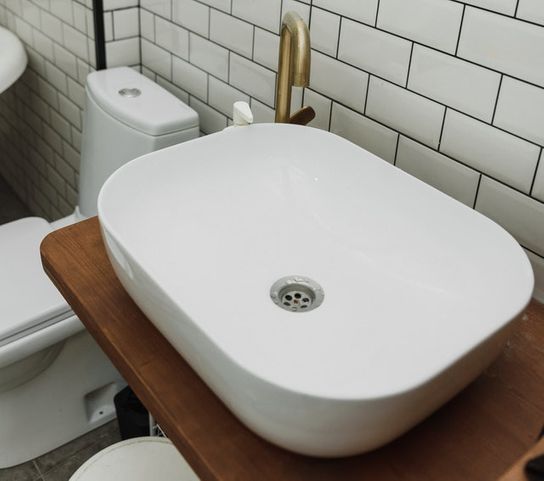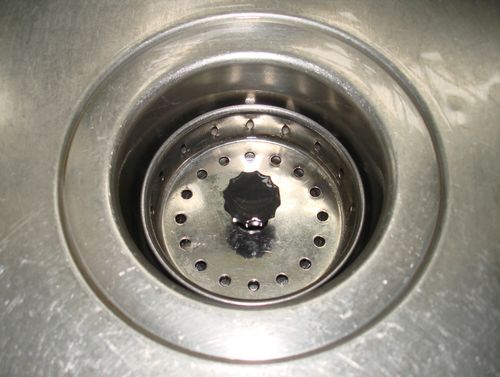Clogged drains are never fun. To make matters worse, clogged drains are inconvenient and generally annoying with all the water and crud. Fortunately, draining a clogged sink does not have to be as difficult as many make it out to be, especially with numerous ways on how to unclog a bathroom sink.
If you are looking for some simple and quick tips on how to unclog basin sink, then you’ve come to the right place. In this article, we’ll give you some easy tips on how to unclog wash basin at home using basic household items and methods.
- What causes a clogged bathroom sink?
- 7 Ways on How to Unclog a Bathroom Sink
- Call a Professional
- Preventing a sink from clogging

What causes a clogged bathroom sink?
The most common culprits that cause a clogged basin for vanity are usually hair and soap scum. Other things like grease, toothpaste, and dirt can also clog your bathroom sink.
Soap Scum
One of the most common is overnight soap scum. Soap scum is what happens when soap and water sit in a sink overnight and harden into a sticky mess that can be hard to remove. It’s especially common in sinks with curved drains, like those found in most bathrooms.
Hair
Another cause of clogging is hair. Hair can easily get stuck in the drain or trap at the bottom of your sink, causing it to back up and overflow. If this happens often enough, you may need to install a drain stopper to prevent it from happening again.
Pipe Debris
Sinks can also become clogged due to debris buildup in the pipes and around the drain hole itself. This kind of buildup happens when water sits stagnant in the sink for too long. If you have a garbage disposal in your sink, it’s possible for debris to get stuck in the pipes and cause a clog.
Food scraps, paper products, and other materials can get caught in the blades and cause the disposal to jam.
Grease Buildup
A clogged sink can also happen if do not clean up after using or pouring grease down the sink. Grease will eventually harden and stick to the sides of your sink, causing it to clog.
7 Ways on How to Unclog a Bathroom Sink
A clogged bathroom sink or basin for vanity may seem like a daunting and stressful issue to deal with, but it does not have to be, especially using a handful of simple yet effective methods. Here are seven useful ways on how to unclog basin sink along with some helpful tips to prevent the sink from clogging in the future.
1. Use a plunger
The first thing you should try is a plunger. Plungers are great for clearing minor blockages in your sink. Just make sure that you have a good seal around the plunger and the drain. Using a plunger is one of the easiest ways to clear out whatever is blocking your drain.
To do this, put the plunger over the drain hole. Then make sure that it’s completely covered by water. Push down on the plunger so that the water goes down into the pipe. Keep pushing until all of the water comes back up and out of your drain.
2. Use a drain snake
If the plunger doesn’t work, you can try a drain snake. A drain snake is a long, flexible piece of metal that you insert into the drain to clear away any blockages. You can easily find and buy a drain snake at most hardware stores.
To use a drain snake, just remove the screen from your drain, insert the snake into the hole at an angle so that its teeth can grab onto anything blocking its path through your pipes and pull upwards while holding your end tightly against the bottom of your sink so that it doesn’t fall back down again.
The whole process should only take about five minutes or less depending on how clogged up your sink is.
3. Use a wet and dry vacuum
A wet and dry vacuum is used for cleaning up messes in the house, both indoors and outdoors. You can also use it for getting rid of built-up dirt and grime in your sink and its pipes.
First, turn off the water supply to your sink and disconnect its pipes using a basin wrench. Next, use your wet and dry vacuum to suck up all of the debris from the drain.
Finally, turn on the water supply again, wait for a few seconds, then rinse out the pipe with hot water.
4. Use boiling water
Another simple way to unclog your sink is to pour a pot of boiling water down the drain.
Start by boiling a pot of water on the stove. Once the water is boiling, carefully pour it down the drain of your sink.
Also, be careful not to splash the hot water on yourself as you handle and pour it down the sink. Let the hot water sit in the drain for a few minutes to loosen up the clog. The heat from the water will help break up any grease or soap scum causing the blockage.
Then, run some cold water down the drain to flush everything out.
5. Use a vinegar and baking soda mixture
Vinegar and baking soda are a classic combination for unclogging drains. Here is how to unclog sink with baking soda and vinegar:
Mix equal parts vinegar and baking soda with some boiling water and then pour the mixture down the drain. Let it sit for a few minutes, then flush the drain with hot water.
6. Use a store-bought drain cleaner
Sometimes, unclogging a bathroom sink can be done using a simple store-bought drain cleaner. These can be effective, but be sure to follow the instructions on the package carefully.
In general, you’ll need to pour the cleaner into the drain and then let it sit for a specified amount of time before flushing the drain with hot water. Be careful not to use too much cleaner, as this can damage your pipes.
7. Use dish soap
Dish soap is yet another simple solution and can also be used to help break up grease and soap scum that is causing a blockage. Just pour a generous amount of dish soap down the drain and then let it sit for a few minutes. Then, run hot water down the drain to flush away the soap.
Call a Professional
If you’ve tried all of the above and you still can’t get your sink unclogged, then it’s time to call a plumber. Plumbing professionals are trained professionals who have years of experience working with pipes and other plumbing systems throughout homes and will be able to quickly diagnose the problem and help you resolve it with minimal hassle.

Preventing a sink from clogging
If you’re like most people, you don’t want to deal with clogged bathroom sinks ever again in the future. Thankfully, there are a few things you can do to avoid clogged bathroom sinks and keep them flowing freely without needing to regularly unclog sink trap.
1. Clean the sink regularly. The first thing you need to do is clean out the kitchen sink after each use. This is the key to preventing clogs, but it’s often overlooked by people who don’t realize how important it is.
2. Avoid excessive use of toilet paper. If you use too much toilet paper and then flush without giving it time to break down properly, it’s going to cause trouble for your pipes and plumbing system in general. It’s better to use less paper and give it more time to break down before flushing.
3. Use only the appropriate and needed amount of soap and water. We all know how easy it is to accidentally leave soap residue behind on our hands after washing them—and those little bits of soap can end up causing problems for your drains
4. Make sure you have enough water in the sink. You shouldn’t have to struggle to get the water to drain out of your sink when you’re done with it—if your sink is draining slowly, this could be a sign that there isn’t enough water in there. Check the level of water in the sink before leaving it alone for any period of time (like while taking a shower or brushing your teeth).
5. Use a sink strainer when washing. When washing dishes in your sink, add a sink strainer to keep food and debris out of the drain. As you wash, any food or other debris that enters the drain will be caught by this strainer, and you won’t have to worry about clogging your drains and having to unclog sink trap.
Conclusion
I hope that this quick guide has provided you with a few quick fixes for unclogging your bathroom sink. Like any plumbing job, usually, the best method of repairing a clogged drain is methodical and thoughtful. Also, while knowing how to unclog a bathroom sink is handy, developing a regular cleaning routine to prevent them from clogging is just as valuable, and will prove to be well worth learning about in the long term.
Frequently Asked Questions (FAQs)
In short, no. The reason why hot water doesn’t work, though, is because it only helps loosens up the material that’s clogging the drain—it doesn’t actually remove it. So once you’ve poured all that hot water in, you’ll have to go back and try again with some sort of snake or other tools to get the material out of your drain once and for all.
No, bleach will not unclog a drain.
Bleach is a strong chemical that can be used to clean certain stains, but it’s not meant for use in drains or pipes. Its harsh chemicals can cause damage to the pipe or drain if you pour it in there. Even if it does manage to get through, it won’t actually unclog your drain because it doesn’t break down any debris that may be sticking in the pipe.
The answer is maybe, but not always. It depends on how much you use, how long you leave it in, and how often you do it.
White vinegar can cause damage to your pipes if you use too much of it or if you leave it in your pipes for too long. The acidity of the vinegar can eat away metal and cause corrosion. If you have a small amount of white vinegar left over after cleaning up grease or food spills in your kitchen, pour it down the sink instead of letting it sit there for hours.
0 Comments for “7 Best Tips on How to Unclog a Bathroom Sink”